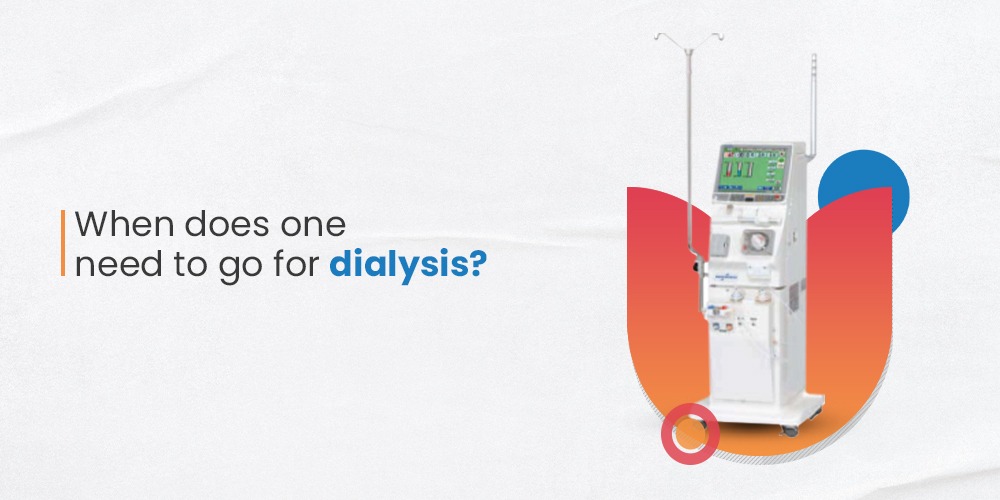Dialysis is a treatment that helps to clean waste and excess fluids from the blood. This treatment is prescribed by medical professionals when the kidneys fail or need a transplant due to severe illness or injury. Dialysis is of three types – Hemodialysis, Peritoneal Dialysis, and Continuous Renal Replacement Therapy.
Hemodialysis:
Hemodialysis is the most common type of dialysis, where a machine removes blood from the body, filters it with the help of a dialyzer and streamlines the cleansed blood into the body. The process usually takes 3 to 5 hours and can be done at hospitals, dialysis centres or at home with the assistance of a medical professional.
Peritoneal Dialysis:
Peritoneal dialysis involves the usage of a solution called dialysate to filter the blood and absorb waste. This dialysis solution is passed into the body through a catheter that’s placed inside the abdomen. This treatment removes the wastes and excess fluids off the walls of the abdomen and is considered the most convenient and versatile type of dialysis.
Continuous Renal Replacement Therapy (CRRT)
Continuous Renal Replacement Therapy is done at the stage of acute kidney failure, where the kidneys lose all their ability to eliminate waste and fluids from the blood. This procedure is performed every day for around 12 to 24 hours. During this process, the waste products and excess water are filtered and returned to the body with a replacement fluid.
With the three types of dialysis being clear it is also important to know when to start or opt for the procedure.
The National Kidney Foundation recommends dialysis when the functions of the kidneys drop to 15% or less. It is also recommended for severe symptoms such as nausea, fatigue, shortness of breath, and muscle cramps with the guidance of a doctor or certified medical professional. One can also opt for dialysis while waiting for a kidney transplant.
Will the kidneys get better after dialysis?
This depends on the cause or the reason behind the kidneys’ dysfunction or failure. In the case of acute kidney failure, the chances of recovery are high while in chronic kidney disease, the chances of healing are meagre. At the end stage of chronic kidney disease, the recovery is irreversible.
Trivitron’s Contribution to Dialysis:
Nikkiso DBB 27 Hemodialysis Machine
Nikkiso DBB 27 offers comfort to the patients during Acetate/Bicarb dialysis/volume-controlled UF and conductivity profiling. The user-friendly interface of the machine enables the continuous monitoring of pumps and valves, and the detection of air bubbles and blood tubbing lines during treatment. The hemodialysis machine consumes less power per dialysis and reminds the replacement of the preventive maintenance kit on time.
The ‘T’ Dialyser Series
The ‘T’ Dialyser series have excellent biocompatibility to remove toxins, a high clearance rate of molecules with small molecular weight, and better anticoagulant properties. The ultrasonic bonding of the cap avoids blood and dialysate leakage. The D-Shape Ring improves the blood shear stress at the edge and prevents the blood residues effectively.
Conclusion:
Once diagnosed with kidney disease or failure, dialysis becomes a part of one’s everyday life. Timely diagnosis and the decision to opt for the best dialysis treatment can lower the risk of developing serious kidney conditions or other medical conditions. Trivitron Healthcare provides cutting-edge dialysis devices that meet the clinical need of hemodialysis.

